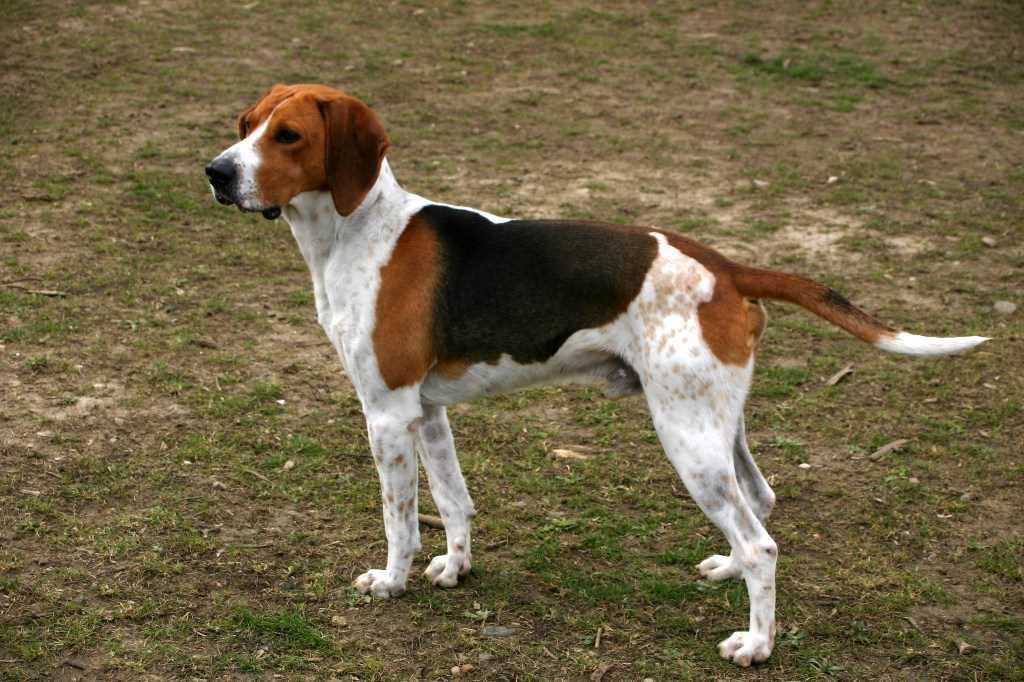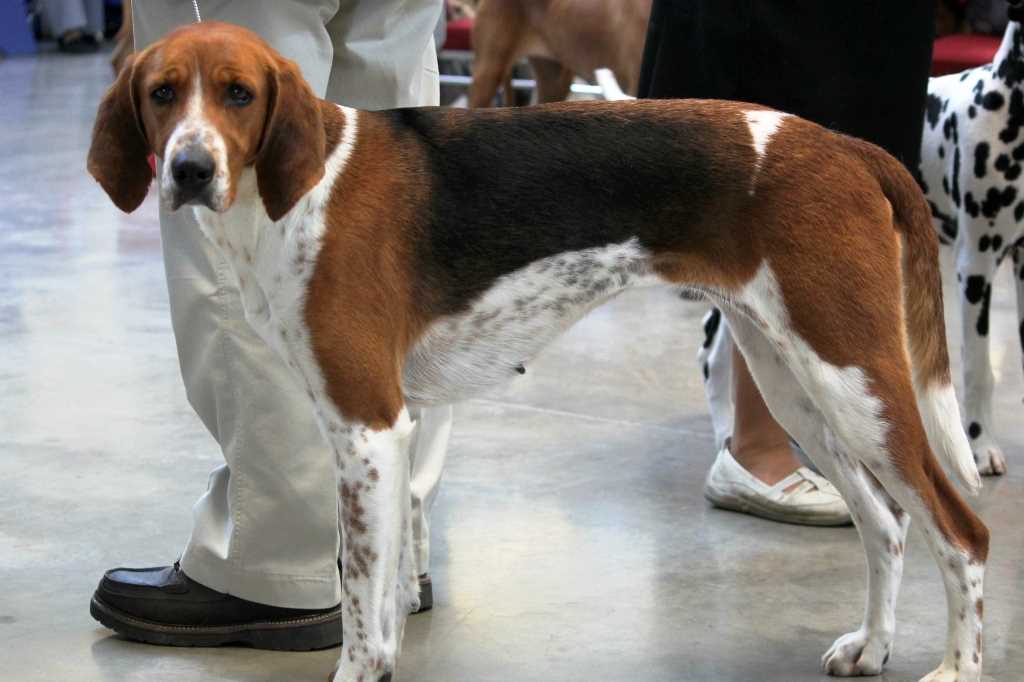The origins of the canine breed anglo francais de petite venerie are not known very well, because the breed was developed before the documentation found, but for the French is typically French. That is, it was born in France hundreds of years ago, from the crossbreeding of French hounds and English hunting dogs. The result of these Anglo-French crosses has resulted in a dog with the traditional colors and body of the English hound, but with a muzzle, head, and details much more similar to those of French dogs.
This breed is descended from various crosses between different breeds including the petit blu de Gascogne, petit gascon saintongeois, harrier, and beagle. The French have distinguished these matings into three breeds, two medium sized and one small.
In France it is mainly used for fox hunting, in Italy instead they are mainly bred in the Maremma area of Tuscany, where they are used in moult for wild boar hunting. It is a perfect hunting dog, it is able to do its job on any terrain, whether marshy, in the woods or on a slope.
It belongs to the class of hounds and therefore has all the natural characteristics of these species. In fact, it has well-developed olfactory qualities, even compared to other hunting dogs, and it is very resistant, so much so that it can resist for many hours even at a fast pace.
The anglo francaise de petite vénerie has a very strong character, revealing itself to be a rather combative and energetic dog: for this reason it is used by many hunters also for wild boar hunting, which requires breeds of dogs able to face such a dangerous prey.
It is certainly not an apartment dog, it needs to stay outdoors a lot and it also needs a lot of movement. A secure garden where he can run and live many hours of the day would be ideal for this dog, although his ideal would be a hunter owner.
Character of the anglo francaise de petite venerie dog breed
The anglo francaise de petite venerie is a tireless dog that is obedient and also cunning. It has always been bred as a working dog in a pack and given its character it adapts very well to this role. It is not typically a companion dog, but it is by no means aggressive, and many specimens are affectionate and extroverted while others are calm and reserved. So it would be best to use the petite venerie as a working dog rather than keeping it indoors.
He is well suited to rural farms where he has plenty of room to play and exercise. He prefers to be outdoors, but it is indicated to keep him indoors for the night, especially in the winter period. It loves to live in contact with its owner and seeks his company, it is affectionate and docile, it is also suitable for children, even if it prefers to work and be useful. Mansueto with people he knows is a little wary instead with strangers.
As far as its training is concerned, this breed of dog is quite stubborn, therefore it is necessary to start when it is a puppy and also to have some experience in dog training. Therefore, it is not a dog suitable for those who do not have practice and those who are beginners with a dog. Often it is at the beginning of the training that it is not very easy to get him to execute the commands, but once passed this phase, the dog does not disobey and does not tend to be aggressive. Only if left alone too much he becomes particularly sad and almost at the limit of depression.
With other dogs he gets along well, as he was born to hunt in packs and he is very fond of their company. With cats, however, it is not very simple; unless he has grown up with them, he tends to see them as prey.
Appearance of the Anglo-Francoise de petite venerie dog breed
The petit venerie is a medium-small dog, the height at the withers goes from 48 to 56 centimeters for a weight that goes from 16 to 20 kilograms. Its bones are decidedly well structured and it has a graceful, harmonious and elegant profile. It looks very much like a beagle. Its musculature is well developed and evident, and its gait is elastic, sure and lively.
The legs are muscular, long and straight, the tail is of medium length and carried straight or slightly curved, garnished with thick hair.
The head is proportionate to the rest of the body and is tapered. The muzzle is long compared to the skull, and ends with the projection of the upper lip compared to the lower one, the truffle is large and black. The eyes are large and brown, very expressive, the ears wide, long and drooping in a V shape.
The coat hair is short, smooth and dense. The length of the coat is the same on the entire body, but it can be slightly shorter on the legs, ears, muzzle and head. As for the color of the coat, there are three different colors: orange and white, black and white, and black and white with orange-brown spots. Many specimens have the characteristic black saddle on the back, typical of many English hounds.
Care and health of the Anglo-Francoise de Petite Venerie breed of dog
The petite venerie is not subject to particular genetic diseases that breeders, over the decades, have almost completely eliminated. But it may happen that it may suffer from a disease that affects its parent breeds, such as dysplasia of the elbow or hips, demodicosis and cataracts. Its average life expectancy is 12 to 15 years.
The long, drooping ears need to be cleaned regularly to ensure that bacteria do not develop an infection.
As far as coat care is concerned, it is sufficient to brush it every now and then to remove the dead hair; during the moulting period, however, it should be brushed almost daily because it tends to lose a lot of hair.
For its feeding there are no problems, a balanced diet and controlled according to the movement it does, is enough to keep it in good health.


